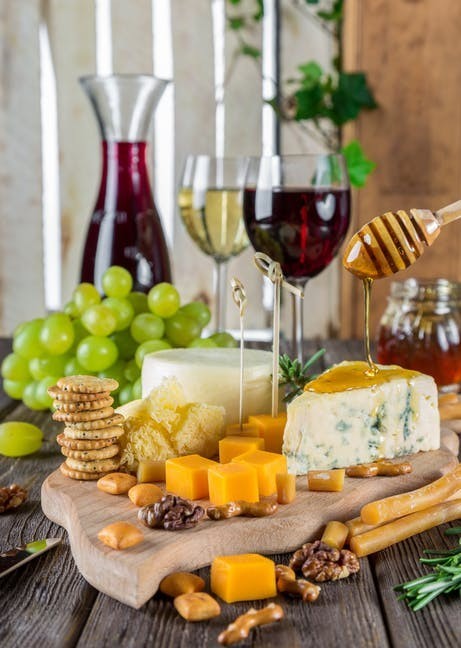Do you care how many calories in the wine you consume when you drink a glass of wine? In general, the total calories in wine depend on the vintage.
Wine might cause fat gain since it can be the usual concentrated source of calories, says Beverley Blanning MW, which explains some choices for wine fans to consider. How to count calories from wine – Mary O’Connell, from Chicago, asks: How far does the calorie content of wine disagree based on its alcohol level? If I’m seeking to restrict my calorie consumption, is Champagne the best alternative? Beverley Blanning, MW, answers! Suppose you are seeking to limit your calorie intake. In that case, you are right to concentrate on the alcohol content of wine since this is most likely the most critical determinant of its calorific content.
Calories in Wine and Fat
Alcohol contains a hefty seven carbs per gram, just two calories fewer than pure fat. Wines to consider – Wine may cause fat gain because it’s a concentrated source of calories, even when it feels light to the taste. Champagne may be a good alternative for restricting calorie intake since it is often relatively low in alcohol compared with other dry whites. Remaining sugar levels would likewise be a factor. Cooler-climate white wine may have lower alcohol levels and, therefore, the reason for fewer calories per glass. A dry Sherry, such as Manzanilla, is a fortified wine that is high in calories; however, as it is frequently drunk in small volumes, the calories consumed may prove to be fewer than decreased alcohol, unfortified wine.
Calculating Calories in Wine
Calculating carbs in wine – To calculate the number of grams of alcohol in a bottle or glass of wine, use the formula: volume x alcohol x 8 – one thousand – Multiplying this response by seven will provide you the approximate calorie content. Using this model, a standard wine bottle at 750ml to an abv of 13.5% would have roughly 567 calories. This quantity is high enough that you may be worried about the calorie in wine. The total guideline intake for females in the United Kingdom is 2000 calories daily and 2 500 calories for males, following the National Health Service. But. Residual sugar – One other point to bear in mind is that a dry wine might not constantly be the best option for a low-calorie choice. A sweeter wine with low alcohol might be lower in carbs than a high-alcohol dry white since the remaining sugar can be a less concentrated source of carbs than alcohol, at four carbs per gram. Beverley Blanning MW is a writer and author who contributed to The Oxford Companion to Wine on Wine and Health. The Policy of Calories in Wine – Decanter.com editor Chris Mercer adds: There’s debate among health also food policy specialists on this topic.
Enjoyment and Calories in Wine
For many of us, there’s nothing better towards the end of the day than that nice cold lager or calming glass of wine. But would you have that second or 3rd glass if you knew how many calories you consumed? New research has shown that most people have no clue – and are unwittingly drinking and becoming fatter. The poll of 2 000 adults has been completed for the Royal Society of Public Health. It found that three-quarters of the public didn’t know – or wrongly figured – the calories in a big glass of wine.
Ten Percent Calories From Alcohol
Nine out of 10 had no clue what a pint of lager included. This is even though adults who consume get roughly 10 percent of their calories from alcohol. Consequently, two out of 3 people said they needed calorie labels. Alcohol is not recognized as food and is exempted, under existing European legislation, from ordinary food labeling. About 56 calories are included in a unit of alcohol; that’s a little glass of low-strength wine. The recommended daily calorie consumption for adults is approximately 2 500 calories for males and 2 000 for females.
A Pint of Lager Contains 180 Calories
Nevertheless, as the new report points out, additional calories aren’t only raised during drinking. There is also the effect the day after, with carb cravings and weaker willpower. Shirley Cramer CBE, Chief Executive of the RSPH, said: With 2 in 3 adults obese or overweight and since the adults who drink get approximately 10 percent of the calories from alcohol, this move might make the main distinction to the waistlines. To highlight how many calories popular beverages contain, the RSPH has released a meal comparison table. It reveals a pint of lager, which includes an average of 180 calories, is approximately equivalent to a little slice of chocolate cake. So It’s not only how many calories are in wine. There are other sources of alcohol and calories.
Informed People Drink Less
A substantial 250ml glass of white wine is the same as four fish fingers, while an alcopop relates to a slice of pizza. On the other hand, a pina colada packs away the same number of calories as a Big Mac. The RPSH provides exercise comparisons, also. To burn off two pints of lager would take half an hour of running, while two double Baileys would need an hour of biking to whittle away. As part of that, the poll that RSPH also experimented with a pub – to find out if displaying calories on beverage menus changed drinking behavior. People presented with calorie info consumed, on average, 400 calories less.
My Unprofessional Conclusion
But in my opinion, this life is too short only to calculate the calories. There is nothing that can be replaced with a friendly fellowship with friends. Naturally, a glass of good wine is just an addition to a good mood.
